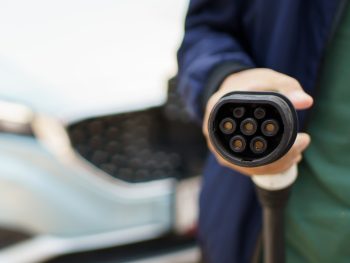The Government has finally confirmed long-awaited details of the zero emission vehicle mandate, which will levy increasingly stringent EV sales targets on car and van makers from 2024.

Announced less than 100 days from its implementation, the ZEV mandate will require the vast majority of new cars and vans sold to be zero emission by 2030 – despite last week’s announcement of the delay to the 2030 ICE ban. It also aligns with the original plan for 100% zero emissions by 2035, in line with markets such as the EU and Canada.
The targets for car sales remain in line with those in the consultation last year, starting at 22% in 2024, 28% in 2025, 33% in 2026, 38% in 2027, 52% in 2028, 66% in 2029 and 80% at 2030. The 100% target by 2035 remains but the interim targets from 2030 will be announced at a later date.
Van targets have been revised. The initial 2024 target remains at 10%, rising to 16% in 2025 (down from 19% in the consultation), 24% in 2026 (up from 22%), 34% in 2027, 46% in 2028, 58% in 2029 and 70% in 2030. As with cars, the plan is for 100% zero-emission vans from 2035 and the interim targets from 2030 will be announced later.
The mandate is being enforced by a system of fines for not meeting targets, set at £15,000 for every car over while payments for vans have been reduced to £9,000 for 2024, rising to £18,000 for the rest of the timeframe.
However, ‘banking and borrowing’ flexibilities will be available for manufacturers to under- or over-deliver each year. Manufacturers overperforming can sell, bank or convert their excess allowances. In the first year, car manufacturers can borrow for up to 75% of their annual target, falling to 25% in 2026, to support them in the early stages.
Any manufacturer selling more ZEVs than required (thereby selling fewer non-ZEVs than they were permitted to) will have spare allowances that they can sell on the open market to manufacturers that have not sold enough ZEVs.
There’s also a derogation for manufacturers registering fewer than 2,500 cars or vans in a calendar year. And OEMs will also be able to earn bonus credits for zero emission vehicles to car clubs, along with ZEV variants of special purpose vehicles and wheelchair-accessible vehicles.
The DfT has also revised how it classes a zero-emission vehicle, retaining the definition that a ZEV emits 0g/km of CO2 according to the WLTP standard but reducing the minimum range by 120 miles to 100 miles.
Alongside the ZEV mandate, the DfT said regulation will also apply to non-ZEVs to ensure that their emissions do not get any worse. On a manufacturer-by-manufacturer basis, non-ZEV CO2 emissions will be baselined according to 2021 emissions, using the higher value of either the manufacturer’s non-ZEV CO2 average, or their whole fleet CO2 target. This target will then apply to manufacturer’s non-ZEVs until at least 2030. This will also be a market-based mechanism, allowing manufacturers to trade allowances as necessary.
The Government has also removed the previous requirement for all non-ZEV vehicles to have a “significant zero emission capability” from 2030 – in a move that it says will give manufacturers and consumers more choice on how they reduce emissions while reflecting latest research on the emissions performance of different technologies and the real-world rates of charging of PHEVs.
The DfT said the ZEV mandate gives the UK the most ambitious regulatory framework for the switch to electric vehicles in the world – while providing certainty for OEMs and helping the charging sector confidence to invest.
Transport Secretary Mark Harper said: “The path to zero-emission vehicles announced today makes sure the route to get there is proportionate, pragmatic and realistic for families.
“Our mandate provides certainty for manufacturers, benefits drivers by providing more options, and helps grow the economy by creating skilled jobs.”
The clarification on targets was welcomed by the UK automotive sector – albeit with only just over three months to go until the scheme kicks in.
Mike Hawes, chief executive at the Society of Motor Manufacturers and Traders (SMMT), said: “With less than 100 days to go, manufacturers finally have clarity on what they are required to sell next year and up to 2030. The industry is investing billions in decarbonisation and recognises the importance of this mechanism as the single most important measure to deliver net zero. Delivering the mandate will challenge the industry, despite the flexibilities now included to support pragmatic, equitable delivery given this diverse sector. “
But the industry also warned again for the need to provide private car buyers with incentives to go electric.
Hawes added: “It is worth noting the mandate means the UK still retains the most ambitious transition timeline of any major market but without any private consumer incentives. Furthermore, the lack of a post-2030 regulatory framework creates investment uncertainty.
“Manufacturers offer a vast range of zero-emission vehicles, but demand must also match supply. We need a buoyant market that delivers fleet renewal at scale, ensures a vibrant used EV market and gives consumers confidence. This means an attractive package of fiscal and other incentives, mandated infrastructure targets and a consistent message that encourages drivers to switch now.”

